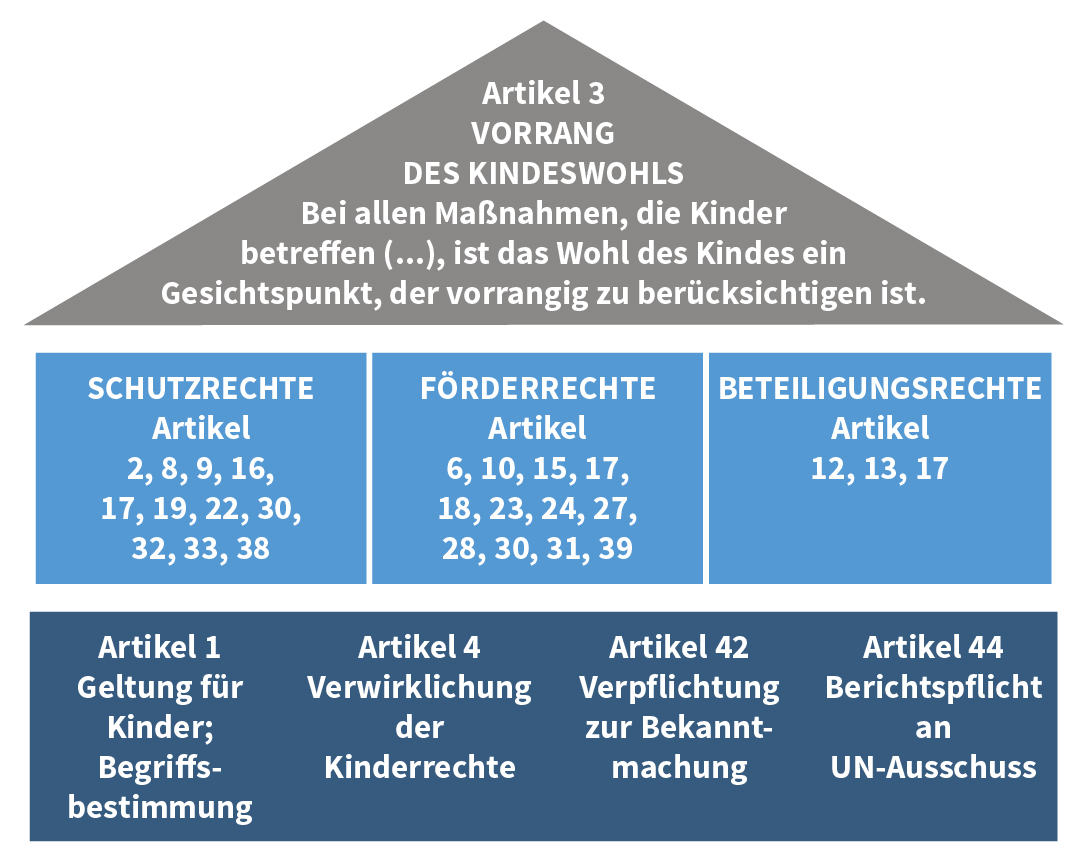
In order to secure the rights of children and young people, the Convention on the Rights of the Child (“UNCRC” for short) was adopted by the General Assembly of the United Nations on 20th November 1989. The Convention is the first agreement that establishes the international recognition of the human rights of children and that contains 54 articles defining internationally binding minimum standards for the welfare of children and young people between the ages of 0 and 18.
The Convention was ratified by the Federal Republic of Germany two and a half years after it was adopted, coming into force here on 5th April 1992. In the meantime, the UNCRC has now been ratified almost worldwide and is therefore the human rights instrument with the highest level of acceptance by the international community. The established principles oblige states to campaign for the creation of frameworks fostering the development of children and young people.
The articles of the UN Convention on the Rights of the Child are often split into three groups of children’s rights, also often referred to the “3 Ps”: the rights to protection, to provision, and to participation.

